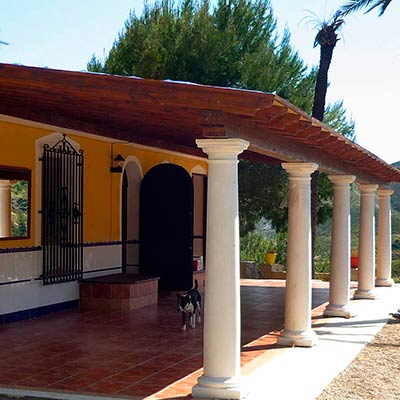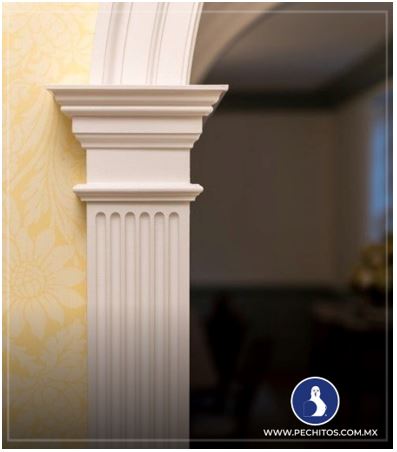When it comes to home and garden aesthetics, few elements provide as much charm and sophistication as decorative concrete columns. Not only do they serve a practical purpose in supporting structures, but they also add an artistic flair to any space. In this comprehensive guide, I’ll explore everything you need to know about decorative concrete columns, from design ideas to installation tips, along with my personal experiences and recommendations.
What Are Decorative Concrete Columns?
Decorative concrete columns are architectural elements made from concrete that serve both functional and aesthetic purposes. They can be installed in various settings, such as:
- Residential homes
- Commercial buildings
- Outdoor spaces like patios and gardens
The versatility of decorative concrete allows for endless design possibilities, making it a favorite among architects and homeowners alike.
Types of Decorative Concrete Columns
There are several types of decorative concrete columns you can choose from, each with its unique style and application.
1. Classical Columns
Classical columns mimic the design of ancient Greek and Roman structures. They often feature intricate details and are typically used in formal settings such as:
- Entryways
- Porticos
- Public buildings
2. Modern Columns
Modern decorative columns have sleek lines and minimalist designs, making them perfect for contemporary spaces. They can be styled in various colors and finishes for a unique look.

3. Rustic Columns
Rustic concrete columns embrace a more natural and textured appearance, perfect for gardens, patios, or rustic-themed homes.
Comparison Table of Column Types
| Type | Design Style | Best Use |
|---|---|---|
| Classical | Intricate and ornate | Formal settings |
| Modern | Sleek and minimalist | Contemporary spaces |
| Rustic | Natural and textured | Gardens and patios |

Benefits of Using Decorative Concrete Columns
Investing in decorative concrete columns comes with several advantages. Here are some notable benefits:
Durability
Concrete columns are known for their strength and longevity. Unlike wood, they will not warp, rot, or be affected by pests.

Low Maintenance
Once installed, decorative concrete columns require minimal upkeep. A simple wash with soapy water will keep them looking fresh.
Versatility
With a wide range of colors, finishes, and styles available, decorative concrete columns can complement any design scheme.

Cost-Effectiveness
Compared to traditional building materials, decorative concrete can be more affordable while providing exceptional value over time.
Personal Experience with Decorative Concrete Columns
When I decided to renovate my backyard, I wanted to create a warm and inviting atmosphere for family gatherings. After much deliberation, I opted for rustic-style decorative concrete columns to frame my outdoor kitchen area. Not only did they enhance the overall aesthetic, but they also provided essential support for the overhead structure. Friends and family often compliment the design, and many have since considered installing similar columns in their own spaces.

How to Choose the Right Decorative Concrete Column
Choosing the right decorative concrete column involves considering several factors:
1. Design Compatibility
Assess your space and existing architectural features. Select a column style that complements the overall design.

2. Size and Scale
Consider the height and thickness of the columns in proportion to surrounding elements. Proper scaling ensures a harmonious look.
3. Finish and Color
Choose finishes that align with your desired aesthetic, whether a polished surface or a textured, matte look.

Notes on Column Sizing
- Standard heights for decorative columns are typically between 8 to 10 feet.
- The diameter should be proportionate to the overall design; larger spaces may require bulkier columns.
Installation Process for Decorative Concrete Columns
The installation of decorative concrete columns can be a straightforward process if planned properly. Here’s a step-by-step guide:
Materials Needed
- Concrete mix
- Column molds
- Reinforcement materials (if necessary)
- Mixing tools
- Finishing tools
Step-by-Step Installation
- Prepare the Site: Clear the area where the column will be installed.
- Set Up Molds: Assemble the column molds securely to prevent leaks.
- Mix the Concrete: Follow the manufacturer’s instructions to mix the concrete.
- Pour Concrete: Pour the concrete into the molds, ensuring there are no air pockets.
- Finish: Smooth the surface and add any desired texturing before the concrete sets.
- Remove Molds: Once fully cured, carefully remove the molds and make any final adjustments.
- Install: Secure the columns in place as needed.
Cost Considerations for Decorative Concrete Columns
The cost of decorative concrete columns can vary significantly based on various factors, such as:
1. Material Costs
Different types of concrete and finishes will affect the price. Standard concrete is typically less expensive than specialty options.
2. Labor Costs
If you hire professionals for installation, labor costs will need to be factored into your budget.
3. Design Complexity
Customizations and intricate designs can increase both material and labor costs.
Estimated Cost Table
| Column Type | Estimated Cost per Column |
|---|---|
| Standard Column | $150 – $300 |
| Decorative Column | $300 – $600 |
| Custom Column | $600 – $1200+ |
Pros and Cons of Decorative Concrete Columns
Like any feature, decorative concrete columns come with their own set of advantages and disadvantages.
Pros
- Highly durable and long-lasting
- Low maintenance requirements
- Wide range of styles and finishes
- Cost-effective in the long term
Cons
- Initial installation may be labor-intensive
- Can be heavy and require proper support
- Limited flexibility compared to other materials
FAQs About Decorative Concrete Columns
1. How long do decorative concrete columns last?
With proper care, decorative concrete columns can last for decades, often outliving other materials like wood.
2. Can decorative concrete columns be painted?
Yes, decorative concrete columns can be painted, allowing for customization and color matching.
3. How do I maintain my decorative concrete columns?
Regular cleaning with soap and water is typically sufficient to keep them looking good. For outdoor columns, inspect for any wear or damage regularly.
Conclusion
Incorporating decorative concrete columns into your space can elevate its design and functionality. Whether you choose classical, modern, or rustic styles, these columns offer durability and aesthetic appeal. With the right planning and execution, you can create stunning architectural features that add character and support your structures for years to come.
From my personal experience, I can attest to the transformative power of decorative concrete columns. Don’t hesitate to explore this versatile option for your next home improvement project!